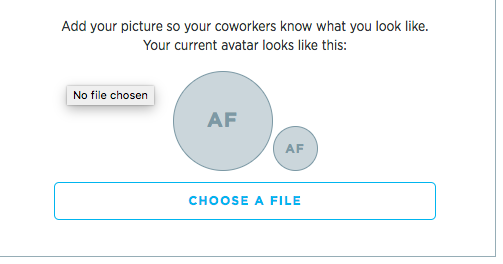If you've ever heard someone reference a "language barrier" as a roadblock to communication, you may have wondered what he was talking about. Sometimes a language barrier literally refers to not being able to speak the same language, but the phrase has a number of applications.
Tip
Simply put, a language barrier is anything in the realm of verbal communication that prevents two people from understanding each other.
What Is a Language Barrier?
A language barrier, in the most basic and simplistic use of the term, is the lack of a common language that prevents two or more people from speaking to or understanding each other through verbal communication. While many types of language barriers appear in society, we offer a few examples of language barriers to explain.
An English-speaking person traveling in China and encountering people who only speak Chinese could be said to be facing a language barrier in her efforts to communicate. The Chinese citizens may understand her gestures for things like "phone" or "water," but in terms of a shared common language, they have none.
These barriers normally occur between people who speak different languages or have different native languages in a single place of meeting or communicating. For example, a barrier could occur between an English language speaking person and a foreign language speaking person, like someone who speaks Spanish, while somewhere in the U.S. that places English as the major native language in the area.
Another example can be when someone is language learning in new language classes and cannot completely speak the second language to someone who has that new language as a native language in their area. The learner’s conversation may be stuck due to the different dialects used. Cultural differences can also make an interaction like this be hard to communicate effectively. This is an example of a linguistic barrier that can affect methods of communication with someone from a new country or culture. Native English speakers often see this complication when learning a new language and trying to have a conversation with someone who has that language as their own language.
There are other kinds of language barriers that relate less to literal "language" and more to issues around dialect, slang or in some cases, a lack of a shared vocabulary with which to discuss a particular topic. For someone with no business background, discussing the possibility of a collaboration with a corporate CEO may present a significant language barrier because the lack of shared vocabulary on the part of the CEO and the participant who is not business savvy leaves the pair without an ability to come to a verbal understanding.
Language barriers are significant because they are often an impediment to progress. This progress can take the shape of a business deal, a relationship, an emotional understanding or the possibility of creative collaboration. Even worse, language barriers can sometimes cause misunderstandings that lead to conflict, frustration, offense and hurt feelings.
For the majority of people who are participating in a conversation with someone who does not share the same language, the biggest issue they face is that the person may misunderstand them and that misunderstanding could possibly result in hurt feelings or serious offense. In some cases, misunderstandings can lead to violence.
What Are Other Barriers to Communication?
Business school teaches people that there are seven barriers that can impede effective communication. Although language barriers are the most common and perhaps the most widely experienced barrier toward communication, language barriers are far from the only impediment to communication.
Physical barriers can be a serious impediment to communication and understanding. Physical barriers can come in the form of actual walls or simply the way a person is forced to approach another person in order to speak with him. Difficult terrain, high levels of security or inaccessible locations are all examples of physical barriers that can prevent effective communication. Physical barriers can also create a psychological barrier, wherein the person seeking to communicate finds the physical barriers so taxing that he begins to feel less comfortable that his communication will be received with the intention that is delivered. These physical barriers can often include people with disabilities, who may not be able to actively communicate with someone else in a conversation.
Barriers of perspective are another impediment to effective communication. The perspectives, biases or preconceived notions with which an individual enters a situation can prevent her from communicating effectively and honestly with someone else. If a person comes to a conversation or an interaction with a prejudice, either about the person with whom she is hoping to communicate, the work that she is trying to do or even the idea she is planning to discuss, these perceptions can create preconceived notions that act as barriers and that make it difficult for new ideas to take shape and may make communication between the two parties impossible.
Another challenging barrier to effective communication is the existence of emotional barriers. Emotional barriers are barriers that an individual has in place because he is making an effort not to suffer or feel any pain. This is an understandable predilection, but the fact is that emotional barriers need to be dismantled if the individual has any hope of becoming the kind of person who can communicate effectively and be open to new experiences.
An additional barrier that is often an issue in the workplace is the cultural barrier. As our digital world increasingly means that our business affairs are conducted around the globe with people from all cultures and walks of life, it is critical to understand certain cultural values, taboos and customs. Failing to acknowledge a cultural barrier may prevent you from being able to move forward with a colleague from a different culture.
Lack of Attention in Communication
A lack of attention in communication can cause significant setbacks and even conflicts. When people don't pay attention to the kind of language they use and find themselves focused on things other than the way they come across, this poor attention can be felt by the person with whom they are attempting to communicate. A lack of attention to communication isn't simply about language.
An attentive communicator also listens effectively and looks for cues in her conversational partner's body language, behavior and silence. A fix to this could be looking to solutions to the barrier itself, like using apps to translate your conversation. Other solutions can revolve around finding an in-person translator who is bilingual or knows both languages spoken to help in the miscommunication. One may also use facial expressions to get their main points across in a barrier, whether it's due to language differences or even hearing loss.
Active Listening
Words are not the only way that people communicate, and sometimes silence speaks louder than words. If you are a poor listener, you are a poor communicator. Communication is not simply about what the other person says. Active listening is a communication tool that people use in business and in their personal lives that helps them to ensure that even when they are listening, they are communicating. Active listening involves reflecting back to the person in question what they have just said. There are several tips and skills that you can build into your own communication strategy to improve your active listening skills.
The goal when you are actively listening is to make sure that the person with whom you are communicating feels understood. For this reason, it's critical that as you try to develop your skills as an active listener you don't attempt to formulate your response while the other person is still talking and that you don't let yourself get distracted by everything happening around you. Most critically, it's important that you understand everything that the person is saying with his words and everything that he is saying with his pauses, his body language and his intonation.
When you practice active listening, you want to make sure that you are maintaining eye contact with the speaker. This will help her see that you are focused on what she is saying. Nodding and saying things like "Mmm hmm" or "yes, I see" will help her to feel understood and to begin to open up and communicate more freely.
Sometimes, if you want to clarify that you have understood something that the other person is saying, it's a good idea to repeat the things he said back to him in your own words. Paraphrasing what you've understood him to say can give him the opportunity to correct you if you've misunderstood or if he has misspoken. It also has the added bonus of ensuring that the person with whom you're speaking feels that you have been listening to him and understand where he is coming from. From there, communication will flow more smoothly because he won't feel on guard and will be comfortable being open and honest.
Related Articles
References
Writer Bio
Ashley Friedman is a freelance writer with experience writing about education for a variety of organizations and educational institutions as well as online media sites. She has written for Pearson Education, The University of Miami, The New York City Teaching Fellows, New Visions for Public Schools, and a number of independent secondary schools. She lives in Los Angeles.










